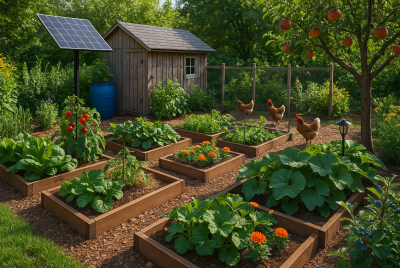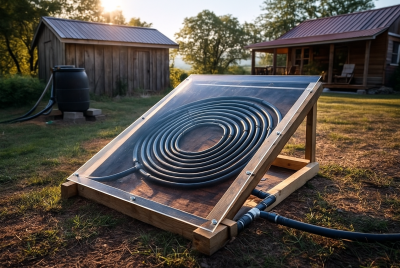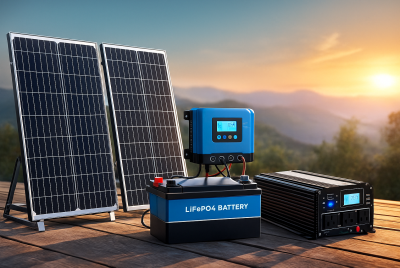Homesteading Farming: How to Start a Self-Sufficient Life
We may earn a commission for purchases made using our links. Please see our disclosure to learn more.
Grocery prices are rising. The world feels more chaotic. Many people want a simpler, more self-reliant way to live. Getting started can seem intimidating when you’re new to it all. Where do you even begin? What if you don’t have a big yard or farming experience? That’s where homesteading farming comes in. It’s a practical, hands-on way to grow your own food and take back control. Whether you live on a farm or in a neighborhood, there’s room for it in your life. In this guide, we’ll walk you through the basics—how to start, what you’ll need, and how to build confidence as you go.
What Is Homesteading Farming?
Homesteading farming is the technique of growing your own food, raising livestock, preserving your crop, and maintaining your property for long-term sustainability. It’s commonly connected with country life, but don’t let that stop you.
People are homesteading in their backyards, patios, rooftops, and even apartments. The goal is to lessen your dependency on commercial systems and live a life grounded in self-sufficiency and nature.
Why More People Are Turning to Homesteading
Healthier Eating
Fresh, organic, pesticide-free produce—grown by you. You know exactly what’s in your food and what isn’t.
Economic Relief
While there’s some upfront cost, growing your own food and raising livestock can drastically reduce grocery bills over time.
Emotional Well-Being
Studies show that tending to plants and animals boosts mood, reduces anxiety, and helps you feel more connected to the world.
Preparedness
Whether you’re concerned about food shortages or just want peace of mind, a homestead gives you security and skills you can always rely on.
And it’s not just anecdotal—science backs this up. A homestead food production study showed that year-round gardening and small livestock farming improved nutrition and food security, particularly for women and children.
Similarly, a home gardening case study revealed that expanding backyard gardens led to a 21% drop in food insecurity and better dietary diversity. These findings underscore what many homesteaders already know—this lifestyle truly works.
Getting Started: A Beginner’s Roadmap to Homesteading Farming
1. Assess Your Space and Lifestyle
Start by looking at what’s realistic for your home, yard, and daily routine.
- Do you have 10 minutes a day or a few hours on weekends?
- Are you more interested in growing food, raising animals, or both?
- Is your climate suitable for growing certain crops?
You don’t need to do it all at once. In fact, it’s better if you don’t. Start small, succeed early, and build confidence.
2. Plan Your First Garden
If you’re a complete beginner, focus on easy-to-grow crops that give a high yield with low effort.
Best beginner crops:
- Tomatoes
- Lettuce
- Zucchini
- Herbs like basil, mint, and rosemary
- Green beans
Pro tip: Raised beds make gardening easier on your back and keep soil quality high.
📌 Recommended Product:
Stainless Steel Garden Tools Set
A beginner-friendly kit with ergonomic tools and a durable tote bag—perfect for raised bed or container gardening.

3. Explore Small Livestock Options
Adding animals to your homestead increases your independence, but also your responsibilities. Start with animals that require minimal land and are easy to manage.
Chickens – Eggs, meat, compost material, and pest control
Rabbits – Great meat source, fast breeders
Goats – Milk, weed control, and even companionship
Bees – Pollination and honey production
📌 Recommended Product:
Omlet Eglu Chicken Coop
This modern coop is insulated, easy to clean, and great for backyard chicken keepers.
4. Master Composting and Soil Health
Healthy soil = healthy plants. By composting food and yard leftovers, you create fertile soil that helps your garden thrive.
Skip meat, dairy, and oily foods
Use veggie peels, eggshells, grass clippings, and coffee grounds
📌 Recommended Product:
Vitamix FoodCycler FC-50
It turns waste into compost overnight and fits right on your kitchen counter.
5. Practice Water Conservation
Homesteading often includes harvesting rainwater and using it to irrigate your crops. It’s eco-friendly and cost-effective.
📌 Recommended Product:
RTS Home Accents Rain Barrel
Easy to set up, visually appealing, and includes a spigot for easy use.

6. Preserve What You Grow
You’ll likely grow more than you can eat fresh. Learn how to preserve your harvest through canning, drying, fermenting, and freezing.
Essential preservation methods:
- Water bath canning (for jams, pickles, tomatoes)
- Pressure canning (for meat, beans, low-acid veggies)
- Dehydrating fruits and herbs
📌 Recommended Product:
NESCO FD-75A Snackmaster Pro Dehydrator
This top-rated dehydrator is perfect for beginners and pros alike.
7. Continue Learning and Connecting
You’ll never know everything—and that’s the fun of it! Join homesteading forums, attend local workshops, or follow YouTube homesteaders who share tips, failures, and insights.
Helpful resource: Top Homesteading Books You Should Own – A handpicked list for every level of experience.
Final Thoughts
Homesteading farming isn’t an all-or-nothing pursuit. You don’t need to move to the mountains or raise a herd of goats tomorrow. All it takes is the courage to begin. Plant one seed. Learn one skill. Build one system. And before you know it, you’ll be living a life that’s not only more sustainable—but far more satisfying. Looking for seasonal tips to keep your homestead thriving? Don’t miss this guide on fall homesteading essentials to prepare your land, garden, and mindset for the cooler months ahead.
FAQs
1. Can I homestead on a small urban lot?
Absolutely! Container gardening, chickens, and composting are all possible in small urban spaces.
2. What are the startup costs of homesteading?
It varies. You can start a basic garden for under $100. Livestock and larger systems require more investment over time.
3. Do I need a greenhouse?
Not at first. But greenhouses are helpful for extending your growing season and protecting delicate crops.
4. Is it legal to raise animals in my neighborhood?
Always check your local zoning laws and HOA regulations. Many cities now allow backyard chickens and bees with permits.
5. How much time does homesteading take?
You can spend as little as 30 minutes a day or build it into a full-time lifestyle. Start small and expand based on your availability.




